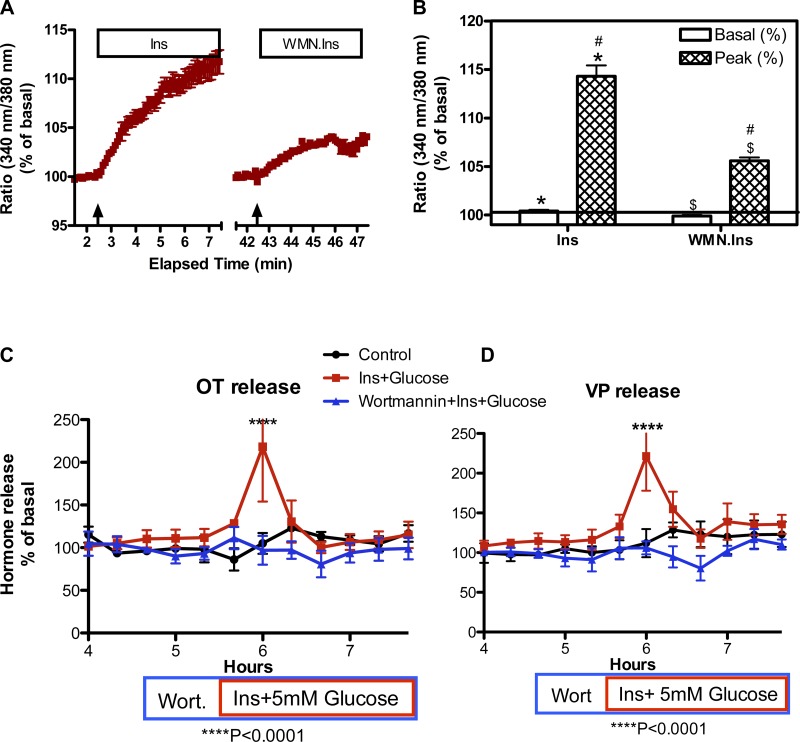Fig. 7.
Effect of the phosphatidylinositol 3 kinase (PI3K) inhibitor wortmannin (WMN) on the Ins-induced increase in [Ca2+]i and insulin with glucose (Ins+glucose)-induced OT and VP release. A: time course of Ca2+ response to Ins (3 ng/ml) in the presence of 13 mM KCl in the absence (Ins) or presence of WMN (50 nM, WMN.Ins) The medium contained 5 mM glucose. Arrows indicate when Ins was administered. B: comparison of the peak responses under these conditions. Ins (3 ng/ml) induced an increase in [Ca2+]i in the majority of SON neurons in the presence of 5 mM glucose and 13 mM KCl (to increase resting membrane potential) (*t = 820.0, P ≤ 0.001;). The peak response was greatly reduced in the experiments when cells were pretreated with WMN (#H = 42.879, P ≤ 0.001; $t = 18.299, P ≤ 0.001). Data were combined from neurons imaged in 2 explants. Total number of neurons = 40 in each experiment. C and D: effect of WMN on OT and VP release, respectively. Addition of WMN alone 1 h before increasing the perifusate glucose and insulin concentrations to 5 mM and 3 ng/ml, respectively, did not alter basal release of OT (175 ± 22 pg/ml) or VP (231 ± 20 pg/ml), but it prevented the increase in OT and VP release induced by the addition of glucose and insulin. ****P < 0.0001. n = 6 explants per group.

